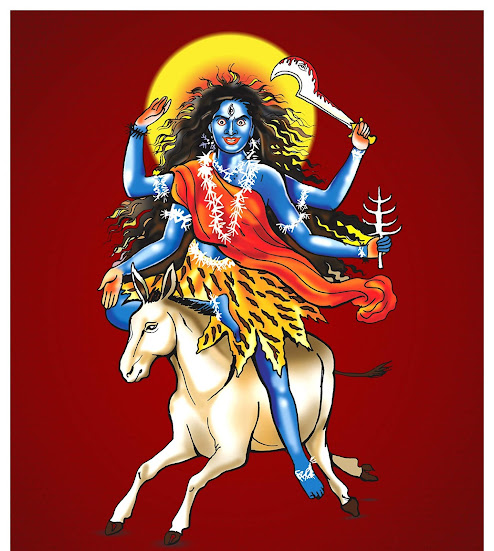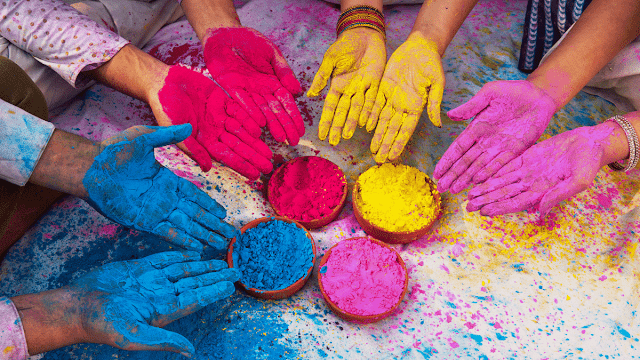Chaitra Navratri

Chaitra Navratri is a significant Hindu festival celebrated over nine days, dedicated to the worship of Goddess Durga and her nine divine forms. It falls in the Hindu month of Chaitra (March-April), marking the beginning of the Hindu New Year in several regions of India. This festival is observed with great devotion, fasting, prayers, and cultural events.
Significance of Chaitra Navratri
1. Spiritual Significance
Chaitra Navratri symbolizes the victory of good over evil, devotion to divine energy, and self-purification.
It is a period for seeking the blessings of Goddess Durga for strength, prosperity, and protection.
2. Religious Significance
This festival is associated with the legend of Lord Rama, as his birth anniversary (Ram Navami) falls on the ninth day of Chaitra Navratri.
It is also believed that Goddess Durga manifested during this time to defeat the demon Mahishasura.
3. Cultural and Regional Significance
In North India, Chaitra Navratri is celebrated with temple visits, devotional songs, and fasting.
In Maharashtra, it marks the beginning of the new year as Gudi Padwa.
In Kashmir, it is known as Navreh, the new year for Kashmiri Hindus.
In South India, it is linked with Vasant Navratri, celebrating Goddess Durga and Lakshmi.
Nine Days of Chaitra Navratri and Their Deities
Each day is dedicated to a different form of Goddess Durga, known as Navadurga:
1. Day 1 - Shailputri (Daughter of the Himalayas)

Symbolizes purity and nature.
Mantra: Om Devi Shailaputryai Namah
2. Day 2 - Brahmacharini (The Ascetic Goddess)
Represents devotion and penance.
Mantra: Om Devi Brahmacharinyai Namah
3. Day 3 - Chandraghanta (The Warrior Goddess)

Symbol of courage and bravery.
Mantra: Om Devi Chandraghantayai Namah
4. Day 4 - Kushmanda (Creator of the Universe)
Brings health and energy.

Mantra: Om Devi Kushmandayai Namah
5. Day 5 - Skandamata (Mother of Lord Kartikeya)
Grants wisdom and prosperity.
Mantra: Om Devi Skandamatayai Namah
6. Day 6 - Katyayani (The Fierce Warrior Goddess)

Destroyer of evil and protector of devotees.
Mantra: Om Devi Katyayanyai Namah
7. Day 7 - Kalaratri (Goddess of Destruction)
Eliminates fear and negativity.

Mantra: Om Devi Kalaratryai Namah
8. Day 8 - Mahagauri (The Goddess of Purity and Peace)

Blesses devotees with wisdom and virtue.
Mantra: Om Devi Mahagauryai Namah
9. Day 9 - Siddhidatri (The Goddess of Supernatural Powers)

Grants spiritual knowledge and enlightenment.
Mantra: Om Devi Siddhidatryai Namah
Chaitra Navratri Rituals and Celebrations
1. Ghatasthapana (Kalash Sthapana)
On the first day, a Kalash (sacred pot) is placed, symbolizing divine energy.
It is filled with water, topped with mango leaves, and a coconut is placed on top.
2. Fasting and Devotion
Many devotees observe fasting for nine days or on the first and last days.
Some consume only fruits, milk, and water, while others eat satvik food (without onion and garlic).
3. Daily Prayers and Aarti
Devotees worship Goddess Durga by chanting mantras, bhajans, and reading the Durga Saptashati.
Aarti is performed twice a day.
4. Kanya Pujan (Worship of Young Girls)
On the eighth (Ashtami) or ninth (Navami) day, young girls (symbolizing Goddess Durga) are worshipped and offered food.
5. Ram Navami Celebration
The ninth day marks the birth of Lord Rama, and special prayers and bhajans are held.
6. Ramlila and Processions
In many parts of North India, Ramlila (dramatic enactments of Lord Rama’s life) is performed.
Devotees organize processions with idols of Lord Rama and Goddess Durga.
Conclusion
Chaitra Navratri is a sacred and spiritually uplifting festival that marks the beginning of a new year for many Hindus. It is a time for self-discipline, devotion, and seeking divine blessings. Through fasting, prayers and cultural celebrations, devotees honor Goddess Durga and embrace positivity, wisdom, and prosperity in their lives.





